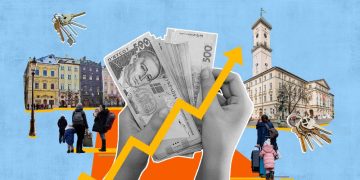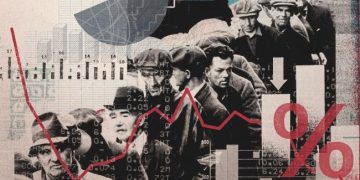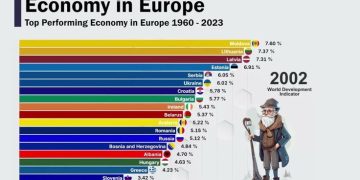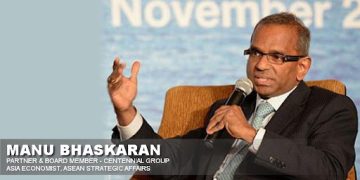Introduction
- Setting the Context:
- Inflation is a persistent economic challenge faced by countries around the world, and central banks are at the forefront of combating it. In recent years, the world has seen inflation rates rise due to a combination of factors, such as supply chain disruptions, geopolitical tensions, and expansive fiscal policies in response to crises like the COVID-19 pandemic.
- Central Banks’ Role: Central banks are responsible for regulating the money supply and setting interest rates to maintain price stability. However, controlling inflation often comes at a cost: higher interest rates can slow down economic growth, potentially leading to recessions.
- The Challenge: The critical challenge facing central banks today is how to combat inflation without stifling growth. This balancing act is complex and involves careful policy choices.
- Purpose of the Article: The article will delve into the tools central banks use to address inflation, the risks of these measures, and whether it is possible for central banks to effectively control inflation without derailing economic growth. It will examine both theoretical and real-world examples to assess the potential for success in this delicate balancing act.
Section 1: Understanding Inflation and Its Causes
- What is Inflation?:
- Define inflation as the sustained increase in the general price level of goods and services within an economy over time.
- Types of Inflation: Demand-pull inflation (when demand for goods and services exceeds supply) and cost-push inflation (when production costs rise, causing suppliers to increase prices). Both types of inflation present unique challenges for policymakers.
- Measuring Inflation: Overview of how inflation is measured through indices like the Consumer Price Index (CPI) and the Producer Price Index (PPI).
- Key Drivers of Inflation:
- Demand-Side Factors: Economic booms, fiscal stimulus, consumer spending, and business investment can increase demand, which leads to higher prices.
- Supply-Side Factors: Supply chain disruptions, rising energy prices, labor shortages, and other factors that limit the supply of goods and services can push prices upward.
- Monetary Policy and Money Supply: Central banks have the ability to influence inflation by controlling the money supply. Too much money in circulation can devalue the currency and contribute to inflation.
- External Shocks: Geopolitical events (like oil price hikes) and natural disasters can create inflationary pressures. Central banks have limited control over such factors but must consider them when setting policy.
Section 2: The Tools Central Banks Use to Tackle Inflation
- Monetary Policy:
- Interest Rate Adjustments: The primary tool used by central banks to influence inflation is adjusting short-term interest rates. By raising interest rates, central banks can make borrowing more expensive, which slows down consumer spending and business investment, reducing demand and thus inflation. Lower interest rates, on the other hand, encourage borrowing and spending.
- Open Market Operations (OMOs): Central banks can buy or sell government securities in the open market to influence the money supply. Selling securities reduces the money supply, helping to combat inflation.
- Quantitative Easing (QE): This is a non-traditional monetary policy used when interest rates are already near zero. Central banks purchase long-term assets, such as government bonds, to inject liquidity into the economy and encourage lending and investment.
- Inflation Targeting:
- Many central banks, including the Federal Reserve and the European Central Bank (ECB), use inflation targeting as a framework for their policy decisions. This means they set an explicit inflation target (usually around 2%) and adjust monetary policy to achieve that goal. The credibility of this target is key to managing inflation expectations.
- Forward Guidance:
- Central banks use forward guidance to communicate their future policy intentions to the market. By signaling their plans for interest rates and other policies, central banks can shape public expectations and market behavior, potentially reducing inflationary pressures.
Section 3: The Trade-Off Between Inflation Control and Economic Growth
- The Phillips Curve:
- Introduce the Phillips Curve, which suggests an inverse relationship between inflation and unemployment in the short run. In theory, reducing inflation may increase unemployment as higher interest rates lead to lower demand and business activity.
- Empirical Evidence: The historical reliability of the Phillips Curve has been debated, with some economists arguing that the relationship has weakened in recent decades. Nonetheless, the trade-off between inflation and growth remains a critical consideration for policymakers.
- The Impact of Interest Rate Hikes on Growth:
- When central banks raise interest rates to control inflation, it can dampen economic growth. Higher borrowing costs make it more expensive for consumers to finance big-ticket items (like homes and cars) and for businesses to invest in expansion. This can lead to a reduction in aggregate demand and potentially a slowdown or recession.
- Investment and Consumption: Explain how increased interest rates affect consumer behavior and business investment. Higher borrowing costs can reduce both consumption (due to more expensive credit) and business investment (due to lower profitability expectations).
- Risks of Over-tightening:
- If central banks tighten too quickly or too severely, it can push the economy into a recession. The risk is particularly high when inflation is driven by supply-side factors (such as oil price hikes) rather than excessive demand. Raising interest rates in such cases may not reduce inflation effectively but could harm economic growth.
Section 4: Case Studies of Central Bank Policy Responses
- The Federal Reserve (U.S.):
- Discuss the actions taken by the Federal Reserve in the face of rising inflation, such as its response to the COVID-19 pandemic and subsequent inflationary pressures.
- 2020-2021 Response: The Fed initially kept interest rates low and implemented large-scale asset purchases to stimulate the economy during the pandemic. However, as inflation surged in 2021 and 2022, the Fed began raising rates. Analyze the trade-offs involved in these decisions.
- The European Central Bank (ECB):
- The ECB’s approach to managing inflation and growth in the Eurozone is similar but with its own unique challenges. The ECB must balance the economic needs of diverse economies with varying inflation rates, particularly as countries like Germany face different inflation dynamics compared to Greece or Spain.
- The Eurozone Crisis: Examine how the ECB responded to the 2008 financial crisis and the subsequent sovereign debt crisis. The ECB had to balance inflation control with the need to support struggling economies in the periphery of the Eurozone.
- Bank of England (BoE):
- Analyze the BoE’s response to inflation and growth concerns, particularly in the wake of Brexit and the COVID-19 pandemic. Like the Fed and ECB, the BoE used aggressive monetary policy in the face of economic shocks.
- Emerging Markets:
- Discuss how central banks in emerging economies, such as the Reserve Bank of India or the Central Bank of Brazil, face unique inflationary challenges. Emerging markets often face inflationary pressures due to currency depreciation, external shocks, and commodity price fluctuations, requiring central banks to act quickly.

Section 5: The Role of Fiscal Policy in Addressing Inflation
- Fiscal vs. Monetary Policy: While central banks play a crucial role in managing inflation, fiscal policy (government spending and taxation) can also influence inflation and economic growth.
- Government Spending: Expansionary fiscal policies, such as stimulus packages, can exacerbate inflation by increasing demand. On the other hand, austerity measures can dampen demand and potentially reduce inflationary pressures.
- Taxation Policies: Governments can adjust taxes to influence consumer and business behavior. Higher taxes can reduce disposable income and curb demand, while tax cuts can stimulate spending and investment.
- Coordination Between Monetary and Fiscal Policy:
- The effectiveness of central banks’ efforts to control inflation is often linked to the fiscal policies of governments. For instance, if a government continues to run large budget deficits while the central bank raises interest rates, the inflationary pressures might not subside as intended. Coordination between the two sectors is essential for a balanced and effective approach.
Section 6: Alternatives to Traditional Monetary Policy
- Negative Interest Rates:
- Some central banks, such as the European Central Bank and the Bank of Japan, have experimented with negative interest rates to stimulate economic activity when conventional tools (like lowering interest rates) have been exhausted. Discuss the pros and cons of this approach.
- Helicopter Money:
- Another alternative is “helicopter money,” where central banks directly distribute money to the public to stimulate demand. While unconventional, this idea has gained some attention as a way to combat deflation and stimulate spending.
- Supply-Side Policies:
- Central banks typically focus on demand-side policies, but addressing inflation may also require supply-side reforms. Supply-side measures, such as investing in infrastructure, increasing productivity, and improving workforce skills, can help ease inflationary pressures by increasing the supply of goods and services.
Conclusion
- Summary of Key Points:
- Recap the challenges central banks face in controlling inflation while avoiding economic stagnation. Emphasize the complexity of this balancing act and the importance of carefully calibrated policy responses.
- Future Prospects:
- Discuss the future of central banking in managing inflation. Consider emerging trends, such as digital currencies, and how they might impact central bank policies. Also, highlight the potential impact of global economic shifts, such as climate change and demographic changes, on inflation and growth dynamics.
- Final Thoughts:
- While central banks have powerful tools at their disposal to control inflation, their success in avoiding negative impacts on growth depends on the effectiveness of their policy actions and the broader economic context. There is no simple answer to the question of whether central banks can tackle inflation without stifling growth, but a careful, balanced approach, along with effective coordination with fiscal policies, can offer the best path forward.





































